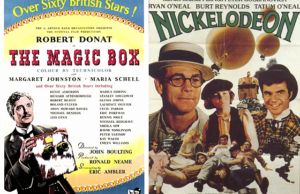The Last Picture Show (1971)

Toronto Film Society presented The Last Picture Show (1971) on Sunday, January 30, 1983 in a double bill with Murder by Contract as part of the Season 35 Sunday Afternoon Film Buffs Series “A”, Programme 6.
Production Company: Columbia. Producer: Stephen J. Friedman. Executive Producer: Bert Schneider. Director: Peter Bogdanovich. Screenplay: Peter Bogdanovich and Larry McMurtry, based on the novel by Larry McMurtry. Photography: Robert Surtees. Production Design: Polly Platt. Assistant Director: Robert Rubin.
Cast: Timothy Bottoms (Sonny Crawford), Jeff Bridges (Duane Jackson), Ben Johnson (Sam the Lion), Cybill Shepherd (Jacy Farrow), Ellen Burstyn (Lois Farrow), Cloris Leachman (Ruth Popper), Sam Bottoms (Billy), Clu Gulager (Abilene), Eileen Brennan (Genevieve), Randy Quaid (Lester), Bill Thurman (Coach Popper), Sharon Taggart (Charlene), Robert Glenn (Gene Farrow), Helen Humann (Jimmie Sue), Jessie Lee Fulton (Miss Mosey), Gary Brockette (Bobby Sheen), John Hillerman (Teacher), Noble Willingham (Chester), Joye Hash (Mrs. Jackson), Mike Hosford (Johnny).

When The Last Picture Show was released, it became one of the most widely acclaimed films of its time. It is the story of a young man coming of age in a small Texas town. But more than that, it is one of the most powerful studies of smalltown America. All artifacts are perfectly detailed in Robert Surtees’ bleak black and white nostalgic photography; in this story of the disparity between dream and reality. Starting with a bleak, windswept street, and Minelli’s Father of the Bride on show at the run-down little cinema on the corner, The Last Picture Show ends with precisely the same scene, except that the film posters have now disappeared.
Peter Bogdanovich has admitted that, visually, a great deal of the film was inspired by the work of John Ford, and Orson Welles. The lighting and texture are similar to The Grapes of Wrath, and the isolated drabness is the effect from Touch of Evil.
Before becoming a director, Bogdanovich had been a film student. In the early ’60s he wrote monographs on film directors for the Museum of Modern Art, and later wrote books on the work of Fritz Lang, John Ford, Allan Dwan, and Orson Welles. Although Bogdanovich received critical acclaim, and this film, The Last Picture Show, was considered an impressive debut, he had made his first mark (uncredited) in a Roger Corman film, and his actual directorial debut was Targets (1968). Bogdanovich’s love for the Hollywood of old is apparent in all his films. The Last Picture Show was his most critically acclaimed work, but he did score highly with What’s Up, Doc?, in which he tried to capture the zing of Howard Hawks’ wild comedies, and Paper Moon was an attempt at reviving John Ford’s vision of rural America.

Both Ben Johnson and Cloris Leachman won Oscars for their performances. In addition to a number of Academy Award nominations, the film also launched the careers of Timothy Bottoms, eff Bridges, Cybill Shepherd, Ellen Burstyn, and Eileen Brennan.
Notes by Fred Cohen










Leave a Reply